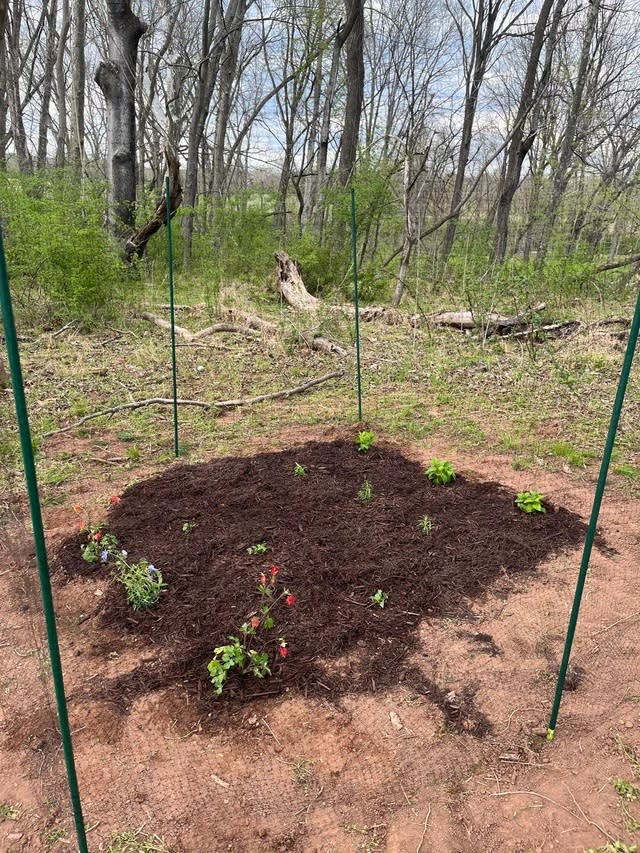Homeowner shares before-and-after photos of exciting lawn renovation project: ‘It’s a nice start’
One homeowner showed how much progress you can make with a native plant garden in as little as six hours.
Native plants are an incredible resource for homeowners. They love the growing conditions in their area of origin, so they’ll thrive without irrigation and save owners money. Trading out even part of your lawn for native plants — or for another low-cost, low-maintenance option like xeriscaping or clover — is good for your schedule and your wallet. Plus, pollinators love the flowers!

That’s why this homeowner took the time to create a new native plant bed in their yard. “My new native plant garden, before and after,” they said, sharing two photos of the transformation in the r/NativePlantGardening subreddit.
In the “before” photo, the area holds nothing but dirt and a few scattered clumps of grass and weeds. In the “after” photo, the ground has been cleared and prepared with mulch. Four small rows of seedlings were freshly added to the plot, which is protected by a mesh fence to create a tidy garden ready to grow.
“It’s a nice start!” said one commenter.
“This took me about six hours to do,” the original poster commented. “Happy with it.” They also listed the plants they chose for their new garden: Joe Pye weed, butterfly weed, coneflower, columbine, and wood phlox.
“I was so close to getting a pawpaw tree, but I didn’t have enough cash on me,” the original poster added. “Also I was mildly afraid of my deer eating the sapling.”
Attracting wildlife is both a risk and a benefit of planting native species, as the local animals can use these plants for shelter or even a snack. Many gardeners love to watch animals visiting their yard — but for those who want to protect their plants, commenters offered suggestions.
“You could try placing mesh around [the sapling],” said one commenter. “But that would cost you more money.”
“Looks like there’s lots of brush in the woods there,” said another Redditor. “I have a patch of privet that needs near continual pruning and produces long, thin, and flexible canes. … I have started using the privet cuttings to weave small fences around my fruit trees for protection. I figure it will rot in a few years, but by then the fruit trees should be much less appealing of targets.”
Join our free newsletter for easy tips to save more, waste less, and help yourself while helping the planet.

